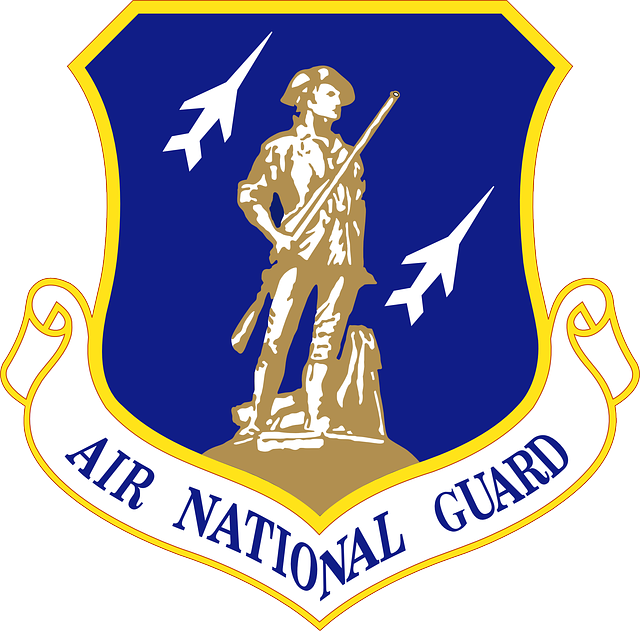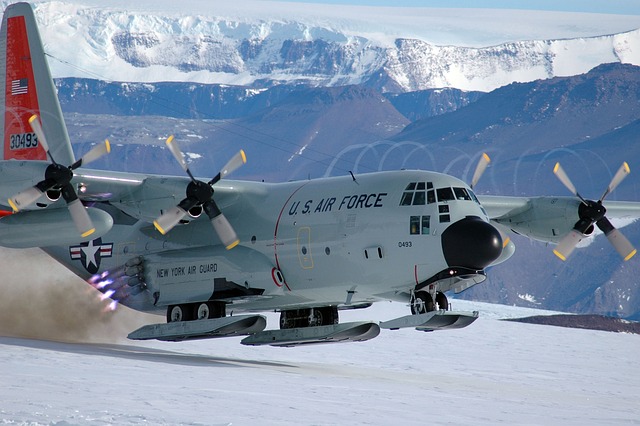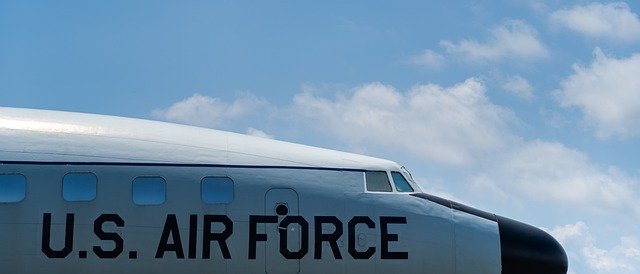When we think of the military, the first image that comes to mind is likely one of the guns, and people running into battle. Sergeants drilling their troops is likely another one. But fighting isn’t the only thing the military provides. They also provide humanitarian work and relief aid.
The military isn’t just one big group. There are divisions of the military, each of which focuses on and is in charge of a different aspect. One of these divisions is the Air Force. As the name implies, the Air Force is dedicated to working from the sky via plane. While the Air Force does engage in battle, recon missions, strategic bomb dropping, and dropping off troops, they do a significant amount of humanitarian work as well.
What kind of humanitarian work does the Air Force do? The answer is plenty. Imagine a scenario in which a group of people is trapped or stranded, or for whatever reason don’t have access to necessary food and supplies. The Air Force would be instrumental in getting help from these people. They would be able to fly over and drop off the lifesaving supplies the people in this situation need.
Medical equipment, food, water, and even much heavier equipment are all supplies that the Air Force has had do drop to people in need. They are also responsible for packing these supplies so that they can travel on the plane and reach the ground safely.
The Air Force also participates in goodwill missions. These missions are carried out to increase the quality of life of the people in a given area. In these cases, Air Force workers provide medical supplies, food, or even toys for those in need. These supplies help to break the barriers down people might face so that they can realize their full potential. With basic needs like food and medical supplies covered, and toys and games to help create community and strengthen bonds, people can focus on other aspects of their lives.
Not only does the Air Force drop off and provide these medical supplies that are so necessary, but they also use them to treat the sick and wounded. In a medical emergency, the Air Force will send their Critical Care Air Transport Team. This team is trained to provide medical aid and relief and will fly to where their help is needed. Their plane is equipped to work as a fully functional flying ambulance, with all the equipment the CCAT requires to save lives.
Wildlife fires are usually normal and healthy for a lot of the planet’s wildlife. However, sometimes these fires can get out of control, or shouldn’t have happened in the first place. Again, this is where the Air Force can come in. Not only are these servicemen able to provide food, medical supplies and aid, and other supplies to those in need, these jacks of many trades are also trained to fight fires.
In the event of an unruly forest fire that local firefighters are struggling to contain, the Air Force Reserves along with the Air National Guard will be called in to help fight the flames. They will board planes with special equipment for fighting fires and can deploy massive amounts of water or fire retardant onto the flames.

Finally, one last example of the Air Force’s commitment to humanitarian work is its ability to perform rescue operations. In the event of natural disasters, the Air Force can deploy troops that are trained and equipped to help. Whether they need to pull people out of rubble or dangerous situations or lend a hand to getting buildings and services like airports and hospitals running again, the Air Force is there. They’re often able to perform this work with very little equipment and in extremely difficult circumstances.

While someone’s first mental image of the military may not have much to do with humanitarian and relief aid, the reality is that many branches of the military are instrumental when it comes to humanitarian work. The Air Force is one of the biggest champions of humanitarian work, and have worked hard to save thousands of people’s lives. Without the Air Force, people in need of food and medical supplies would not be able to access these life-saving necessities. In medical emergencies, there would be no one to fly down and provide medical aid.
In the event of rampant forest fires that are too big for local communities to manage, without the Air Force these fires would rage on, destroying the land and the homes of the communities in the area. Rescue work would be more difficult and less effective, and there would be a greater loss of life in these scenarios.
The Air Force is an incredibly helpful institution, and truly set the standards of what humanitarian work should look like.
